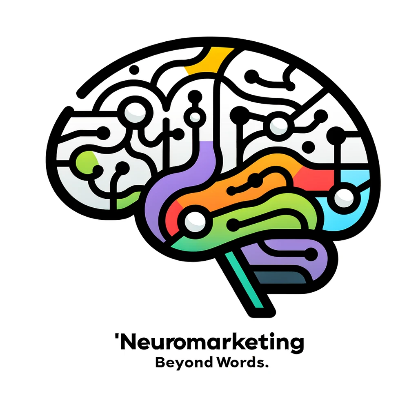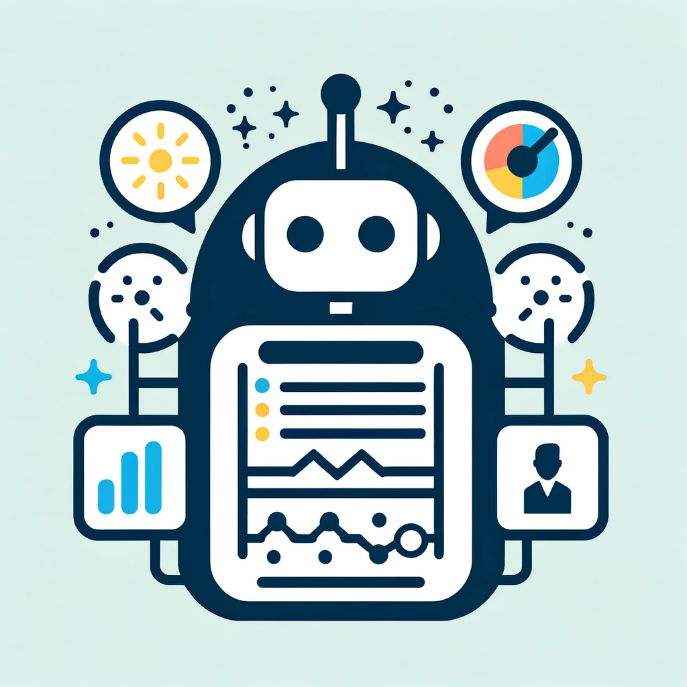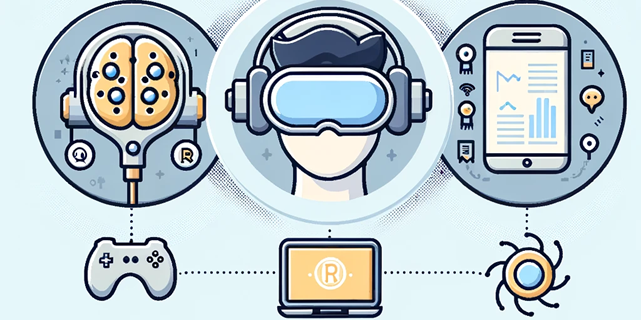The way we gather customer insights is on the verge of a seismic shift. Artificial intelligence (AI) is poised to become the ultimate game-changer, pushing the boundaries of data collection and analysis in ways we can only begin to imagine. Traditional surveys and focus groups might soon be relics of the past. Buckle up, because the future of market research is about to get wild!
Prediction #1: Mind Reading (Almost): Unmasking Unconscious Bias
Imagine truly understanding what customers crave, even before they themselves are aware. This isn’t some futuristic fantasy; AI-powered neuromarketing is making it a reality. By analyzing brainwave patterns and eye movements, researchers can delve into subconscious preferences and emotional responses to products. This can expose hidden biases that plague traditional surveys, where respondents might struggle to articulate their true feelings. Think of the “dislike” buttons registering on an EEG machine while someone offers a polite smile about a new ad campaign. This granular level of insight will allow companies to tailor products and marketing messages with laser precision.

Example: Neurofocus, a market research company, uses EEG technology to understand subconscious reactions to advertising. In a study for a beverage brand, Neurofocus found that participants consciously rated the ads favorably, but their brainwaves indicated a lack of emotional engagement. This insight allowed the brand to refine their ad campaign for a more impactful emotional connection.
Prediction #2: Goodbye Questionnaires, Hello Virtual Worlds: The Rise of Immersive Research
The days of stilted questionnaires and sterile focus groups might be numbered. AI-powered virtual reality (VR) environments are emerging as a powerful tool for Market Research firms. Imagine placing potential customers in a simulated store environment, where they can interact with products, navigate layouts, and voice their opinions naturally. This immersive experience allows researchers to observe real-time behavior and gather richer data compared to static surveys. Think of testing a new car design by letting customers virtually drive it on different terrains, all while gathering feedback on features and user experience.
Example: Ikea Place, a VR app, allows users to virtually place furniture in their homes to see how it looks and fits before they buy. This immersive experience provides valuable data for Ikea on customer preferences and space planning challenges, aiding in product development and marketing strategies.

Prediction #3: The Chatbot Revolution: AI-Powered Customer Conversations
Forget tedious phone surveys. AI-powered chatbots will become the new research assistants, conducting in-depth, natural language conversations with customers. These chatbots will be far more sophisticated than their current counterparts, equipped with advanced sentiment analysis and the ability to adapt to nuanced human conversation. Imagine a chatbot engaging with customers, understanding their needs and frustrations, and gathering valuable data points in a conversational and engaging way. This allows for real-time feedback loops and the ability to tailor surveys on the fly, capturing insights previously lost in standardized questionnaires. Data Analytics & Statistical Analysis can then be applied to this data to uncover deeper customer trends.
Example: Sephora utilizes chatbots to answer customer questions about products, recommend personalized beauty routines, and even conduct mini surveys to gather feedback on new makeup lines. This interactive approach allows Sephora to gather valuable customer insights in a convenient and engaging way, informing product development and marketing efforts.
Prediction #4: The Age of Micro-Targeting: Hyper-Personalized Research
Market research is on the cusp of becoming hyper-personalized. AI will leverage vast amounts of customer data, from social media interactions to purchase history, to create intricate customer profiles. This allows for targeted research campaigns that reach specific demographics with laser focus. Imagine conducting in-depth surveys only with customers who fit a very specific niche, ensuring the data gathered is highly relevant and actionable. Companies will be able to understand the unique needs and desires of each customer segment, allowing for the development of hyper-personalized products and marketing strategies.
Example: Spotify uses AI to personalize music recommendations for each user based on their listening habits and preferences. This allows them to target new music releases and promotions to specific demographics with a high likelihood of engagement, maximizing the impact of their marketing efforts.
Prediction #5: The Rise of the Predictive Consumer: Foresight Through AI
The future of market research isn’t just about understanding the present; it’s about predicting the future. Advanced AI algorithms will analyze historical data, consumer trends, and social media chatter to anticipate customer needs before they even arise. Imagine predicting the next big fashion trend based on social media sentiment and online searches. Companies will be able to proactively develop products and services that meet the evolving desires of their customers, staying ahead of the curve and leading the way in innovation.
Example: Amazon uses AI to predict what products customers might be interested in based on their past purchases and browsing behavior. This allows them to recommend products and personalize shopping experiences, ultimately driving sales.
A Note : All images in this article are powered by AI.


